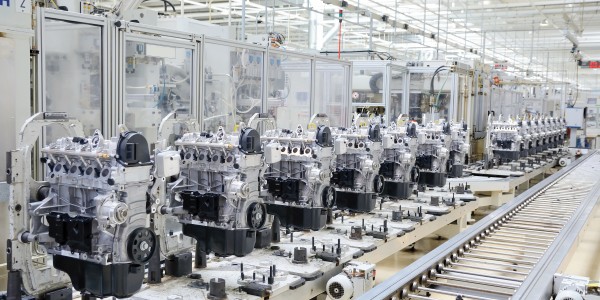Indramat servos can still be found powering industrial robots in plants and factories across the globe. Needless to say, these robots are an important, integral part of manufacturing, and industry would be very different without industrial automation. While the fact that robots are essential to manufacturing is undeniable, whether or not this is a good thing is often debated. Factory owners will sing high praise of industrial robots. Factory workers, on the other hand, will tell you that industrial robots haunt their dreams. Here’s a look at industrial robots pros and cons.
Industrial robot pros
Safety
Industrial robots make work safer for humans. Automation removes workers from dangerous work environments with extreme heat or cold, poor air quality, and toxic or hazardous materials. Industrial robots also help reduce the risk for injuries from repetitive motion or heavy lifting.
Productivity
Unlike people, robots don’t need to take a breather. Industrial robots don’t get tired and they don’t need breaks. A properly maintained machine simply runs, which maximizes productivity. They can also often do the job faster than a human.
Capability
Industrial robots can do many things better than people can. They’re stronger, faster, and more efficient at easily automated tasks than human workers.
Quality
People aren’t perfect. We make errors and we make mistakes. Robots, however, don’t make mistakes. They provide a consistent and regular product which improves both quality and consistency in manufacturing.
Affordability
In the long run, robots are more affordable than human workers. This is great for plant owners and can reduce the costs of goods for consumers.
Industrial robot cons
Expensive setup
Robots are cheaper than human workers in the long run, but they come with a high initial cost. Industrial robots are worth the expense over time, but initial setup is a financial burden.
Harder to train
Teaching a human to spot weld or move an object from point A to point B is fairly simple. Teaching an industrial robot to do those things, however, requires trained, skilled professionals. While robots are getting easier to program, and the number of people with expertise in programming is increasing, this is still an obstacle at present.
Compatibility issues
A French speaker and a German speaker will find it difficult to communicate. Fortunately, people have other methods of communication than just verbal language. There will be blank stares, confusion, and frustration, but ultimately, two people who don’t speak the same language can find a way to accomplish a task together. Two incompatible robots cannot.
Maladaptive
While industrial robot technology is improving, we currently see a lot of limitations. One of these limitations is robots’ inability to adapt or cope with change. This is an area in which people have a real advantage over machines.
Robots view the world in terms of their clearly defined, coded bubble. If something changes and doesn’t mesh with their programmed set of rules, they struggle. Robots don’t handle change, new variables, and unexpected situations well. If something changes in their environment they shut down.
Worker displacement
This is the reason why workers dislike robots. Generally speaking, the robots pros outweigh robot cons, which is why we’re seeing more and more automation. Increasing levels of automation does, however, mean that there could potentially be fewer and fewer jobs for people to do. Robots do not currently eliminate the need for human laborers. They do, however, decrease the number of human workers needed in a factory. The concern is that one day robots may do all of the low-skill labor, leaving a large percentage of people unemployed.
Repairs
When robots work properly, they’re great. When they break, they require expensive repairs. No one likes that machines break and wear down over time, but it’s something that can’t be avoided. Call us today for repair or service on your Indramat motion control system!
